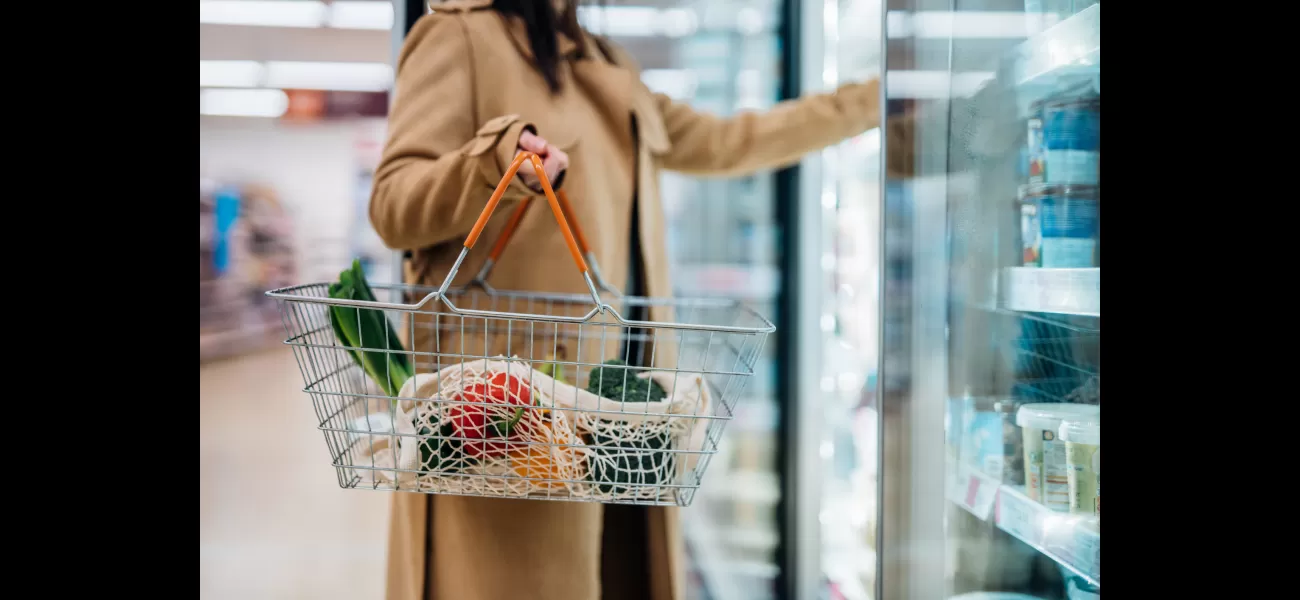Angry shoppers find out secret behind food packet symbol.
In what way is this acceptable?
May 3rd 2024.

Have you ever noticed a small symbol next to the weight measurement on certain food packaging? It's a lowercase 'e' and it can be found next to the grams or volume measurement. You may have seen it before, but have you ever wondered what it means?
It turns out that this symbol actually has a significant purpose. The 'e' symbol indicates that the weight listed on the label is the average weight for that product, not necessarily the exact weight. So, that packet of meat or bag of crisps you just bought may not actually weigh the amount stated on the label.
According to packaging experts at Positive ID Labels, this symbol is used to ensure that the weight is compliant with regulations. They explain that the weight listed on the packet is within a small margin of inaccuracy. This symbol is only used in Europe and while it's not a new addition to food packaging, some shoppers have only recently discovered its meaning and they're not too happy about it.
A Facebook user named Tony Halifax expressed his frustration, stating, "e next to the weight on crisp packs equals, average weight. RIP OFF WORLD." Another anonymous mum was outraged when she discovered that a 230g bag of crisps she purchased only contained 139g. She wrote, "How is this okay at all?"
Many others have also voiced their discontent, calling it ridiculous and a joke that they don't always get what they pay for. This issue has come to light after a consumer psychologist revealed a sneaky trick that supermarkets use to get customers to spend more money. And it all has to do with packaging.
It's a common belief that packaged fruits and vegetables are more expensive than loose items, but this isn't always the case. To make matters more confusing, supermarkets often display the price per item for packaged items and the price per gram for loose items. This can lead to consumers spending more than they intended.
Consumer psychologist Dr. Cathrine Jansson-Boyd advises shoppers to pay close attention to labels and take their time when shopping. She explains that when items are not directly comparable, people assume that their initial belief is correct. So, it's important to take a slower pace and carefully compare prices.
Do you have a story to share about your experiences with this symbol? We'd love to hear from you. Get in touch by emailing us at [email address]. It's important for consumers to be aware of these tricks and to make informed decisions while shopping. So, next time you're at the grocery store, keep an eye out for that 'e' symbol and make sure you're getting what you're paying for.
It turns out that this symbol actually has a significant purpose. The 'e' symbol indicates that the weight listed on the label is the average weight for that product, not necessarily the exact weight. So, that packet of meat or bag of crisps you just bought may not actually weigh the amount stated on the label.
According to packaging experts at Positive ID Labels, this symbol is used to ensure that the weight is compliant with regulations. They explain that the weight listed on the packet is within a small margin of inaccuracy. This symbol is only used in Europe and while it's not a new addition to food packaging, some shoppers have only recently discovered its meaning and they're not too happy about it.
A Facebook user named Tony Halifax expressed his frustration, stating, "e next to the weight on crisp packs equals, average weight. RIP OFF WORLD." Another anonymous mum was outraged when she discovered that a 230g bag of crisps she purchased only contained 139g. She wrote, "How is this okay at all?"
Many others have also voiced their discontent, calling it ridiculous and a joke that they don't always get what they pay for. This issue has come to light after a consumer psychologist revealed a sneaky trick that supermarkets use to get customers to spend more money. And it all has to do with packaging.
It's a common belief that packaged fruits and vegetables are more expensive than loose items, but this isn't always the case. To make matters more confusing, supermarkets often display the price per item for packaged items and the price per gram for loose items. This can lead to consumers spending more than they intended.
Consumer psychologist Dr. Cathrine Jansson-Boyd advises shoppers to pay close attention to labels and take their time when shopping. She explains that when items are not directly comparable, people assume that their initial belief is correct. So, it's important to take a slower pace and carefully compare prices.
Do you have a story to share about your experiences with this symbol? We'd love to hear from you. Get in touch by emailing us at [email address]. It's important for consumers to be aware of these tricks and to make informed decisions while shopping. So, next time you're at the grocery store, keep an eye out for that 'e' symbol and make sure you're getting what you're paying for.
[This article has been trending online recently and has been generated with AI. Your feed is customized.]
[Generative AI is experimental.]
0
0
Submit Comment





